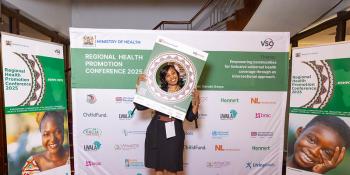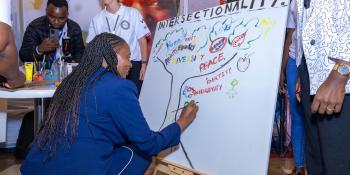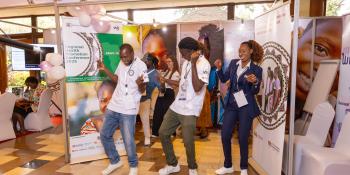In 1984, volunteer John Stedman became the first western teacher to work in Bhutan's only technical college. John ended up staying for six years. In that time he not only supported the education of the next generation of engineers, but also project managed the construction of a hospital.
Later joined by his daughter, who spent eight years as a nurse at the hospital, the family developed a deep love for the ancient traditions and accommodating people of this remote Himalayan mountain kingdom.
In this blog, John looks back at his time in Bhutan.
The engineers of tomorrow
“I received an email recently from Bhutan, sent by my friend Pema on his phone,” said John, 77, from Bexhill-on-Sea.
“When I was there, the nearest telephone link was a two-day journey away. It’s amazing how far and fast Bhutan has changed in a comparatively short time.
“Pema has been involved in village projects, putting latrines into remote villages. That’s something I’ve always admired about development in Bhutan.
“NGOs working in Bhutan haven’t developed simply in the capital. They’ve been more concerned with working in the villages to give communities in remote locations a better quality of life."
Going into the unknown
With little known about life inside Bhutan, research into what John could expect was limited to an encyclopaedia and one book written on the country.
“Not having worked abroad anywhere else, I just took it as part of the situation,” explained John.
“The technical college was in its infancy. Although it had a very well equipped mechanical and motor vehicle workshop, the approach to teaching was pretty rigid.
“It was mainly dictated by the Indian system, learning was by rote and so one of the first challenges was explaining that teaching methods needed to change.
“Although students grasped things I thought they might have difficulty with, they had to be encouraged to work things out from a process of logic.
“After leaving the college and working in their new roles developing Bhutan’s infrastructure, they would need to be able to come up with solutions through a process of thinking they weren’t used to.
“That’s how I saw my role. I was very conscious that my students would be running the country’s infrastructure when they left, which was quickly beginning to develop.
“The fact it has developed as rapidly as it has means that in the longer term, the delivery of technical education through projects like VSO’s must have been successful.”
Contributing after VSO
As a qualified naval architect, John brought along a varied skillset that came in handy at multiple points during his VSO journey – and afterwards, when he was drawn back to return to Bhutan.
While working at the college, he became involved with the work of the Leprosy Mission – so much so that he was persuaded to return for a further three years to plan the build of a new general hospital – later joined by his daughter, who ended up spending almost eight years nursing at the main leprosy hospital.
Taking on the architectural outlines prepared by a previous VSO volunteer, John created detailed drawings for the construction of Yebilaptsa Hospital within Zhemgang District in the sub-tropical jungle of Central Bhutan.
Set against a backdrop of ethnic unrest and strife in the south of the country, John returned – this time with his wife – to help project manage the building of the regional referral hospital.
“I had no extensive knowledge of civil architecture or civil building, so I was very much learning as I went along,” said John.
“I tapped into the knowledge of people that I’d met while on my VSO placement. I drew on their expertise and gradually pulled it together.”
Just getting on with it
“I couldn’t have achieved what I did without my experience of Bhutan during my three year VSO placement,” he added.
“Contacts, things I’d observed, my whole thinking in the way in which I planned and did the detailed designs would never have happened without the experience gained working at the technical college.
“I had developed the skills of looking at a job and thinking ‘how am I going to tackle this’.
“Every day you were having to make decisions and overcome little pitfalls and design problems.
“My wife used to say I made it up as I went along. That was true, but more importantly I drew on my background knowledge.
“Many years ago, as a student, I had to learn about reinforced concrete. It was something I thought I’d never put into practice – but in these situations you have to just get on with it!”
Surviving the earthquake
The hospital managed to survive a major tremor thanks to its structural design and skill of the local labour force.
After returning back to the UK for the final time in 1995, John drew up and faxed over a maintenance manual so they would be equipped to make sure the building was set to stand for years to come.
“These sorts of needs for maintenance are obviously springing up all over the country, and it’s the students from the technical college who will be tackling these problems,” he said.
“Maintaining the electrical supply, the water supply, we don’t think about it. But it still has to be done in Bhutan – and having the workforce to do it is vital to making sure development is sustained.”
Experience is the most valuable form of aid
In the 20 years that have passed since John’s last visit to Bhutan, much has changed.
Roads have been built connecting many of the major towns and villages, more medical facilities like Yebilaptsa Hospital have been constructed and more students are progressing into secondary education.
“Around the world the great need is to develop infrastructure in education, health, water and sewage and these areas can gain enormously from the technical expertise of someone with a career of experience.“I would go as far as to say it’s probably the most important thing we can give to the developing world.
“We can give resources, we can give money, but experience – whether through teaching or knowledge or in technical expertise – I think that is probably the most valuable form of aid.”
Read more about John’s VSO experience in his memoirs, Six Years in Bhutan, available in paperback for £7.99. £1 of the sales from each copy will directly benefit VSO’s work across the world.
Stay up to date with our latest volunteer jobs and other news
Latest posts

In photos: Our Regional Health Promotion Conference 2025
Check out some of our favourite photos from Regional Health Promotion Conference (RHPC25). This event sought to reimagine Universal Health Coverage through the lens of intersectionality.

Using intersectionality to create healthy beginnings and hopeful futures
World Health Day brings global attention to the urgent need to end preventable maternal and newborn deaths. Learn more about how our Regional Health Promotion Conference is tackling these issues head on.

Highlights from the Regional Health Promotion Conference 2025
The Regional Health Promotion Conference 2025 reimagined Universal Health Coverage (UHC) through the lens of intersectionality, by bringing together experts from across East Africa and beyond.
